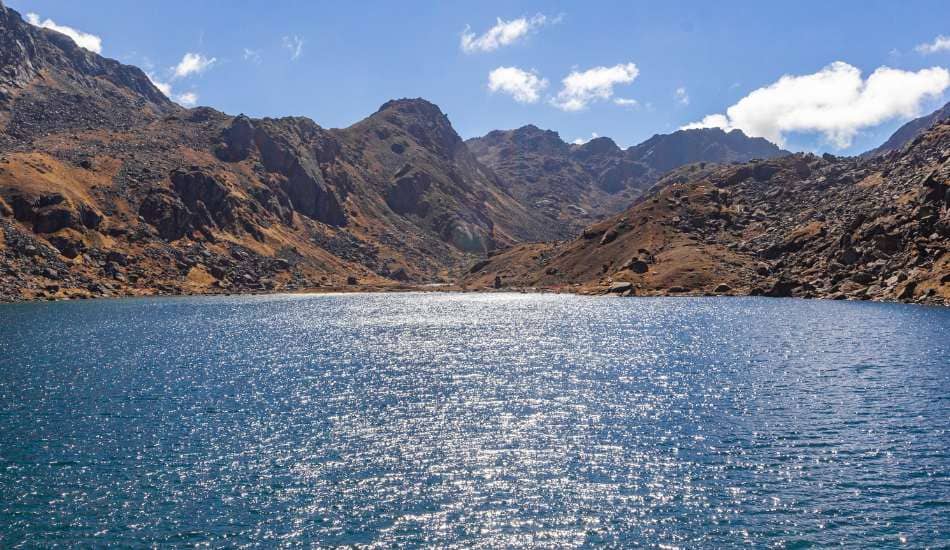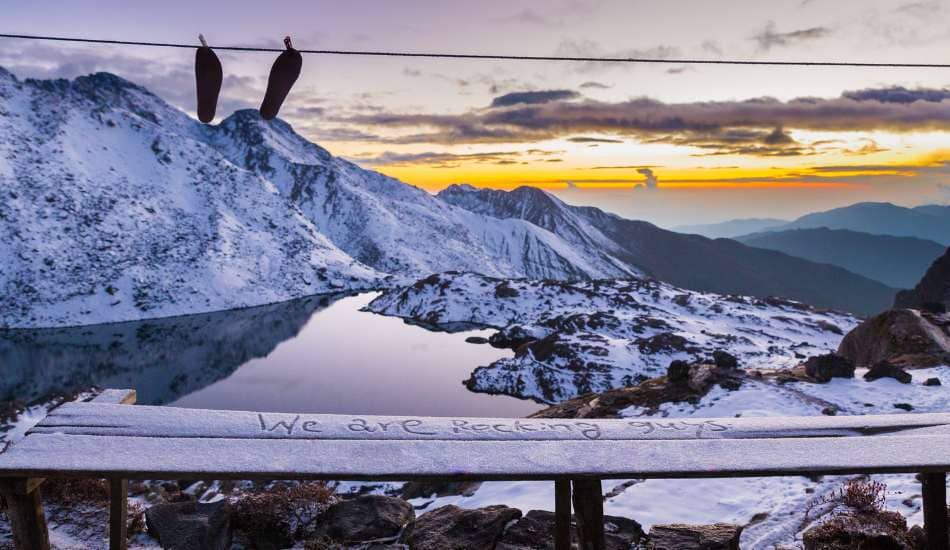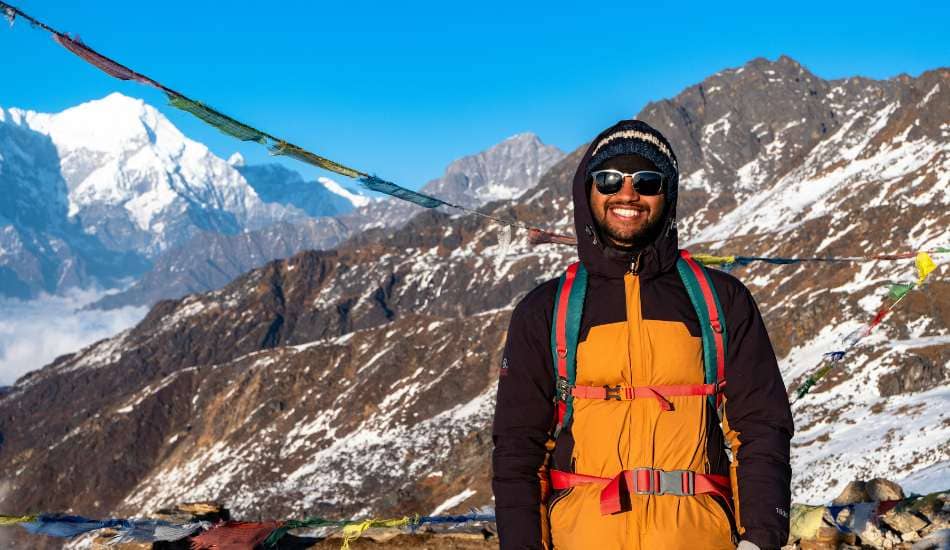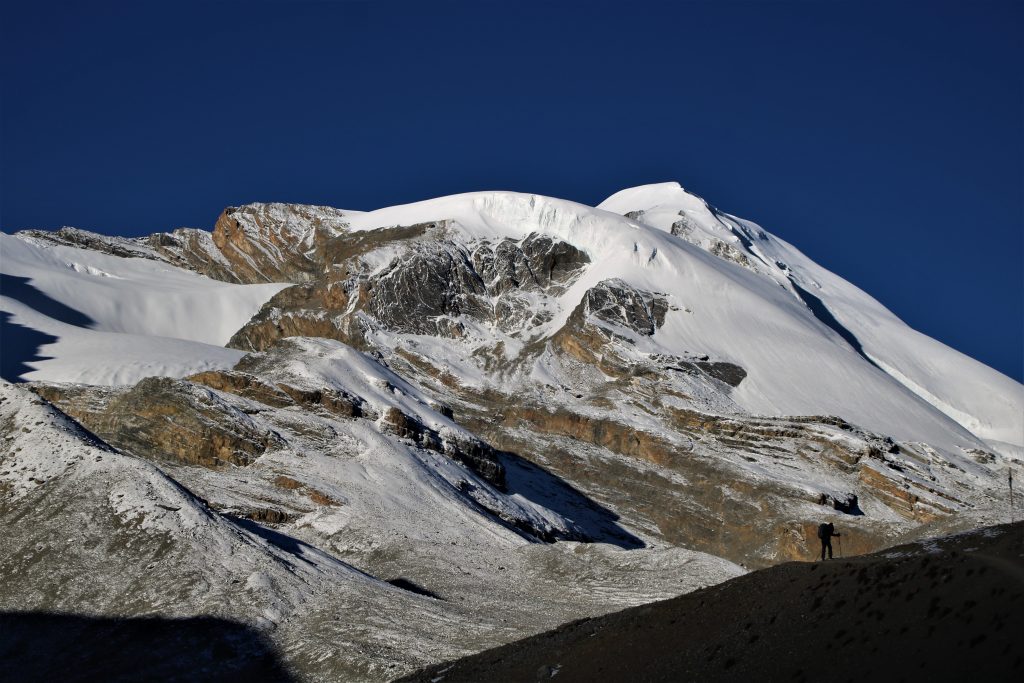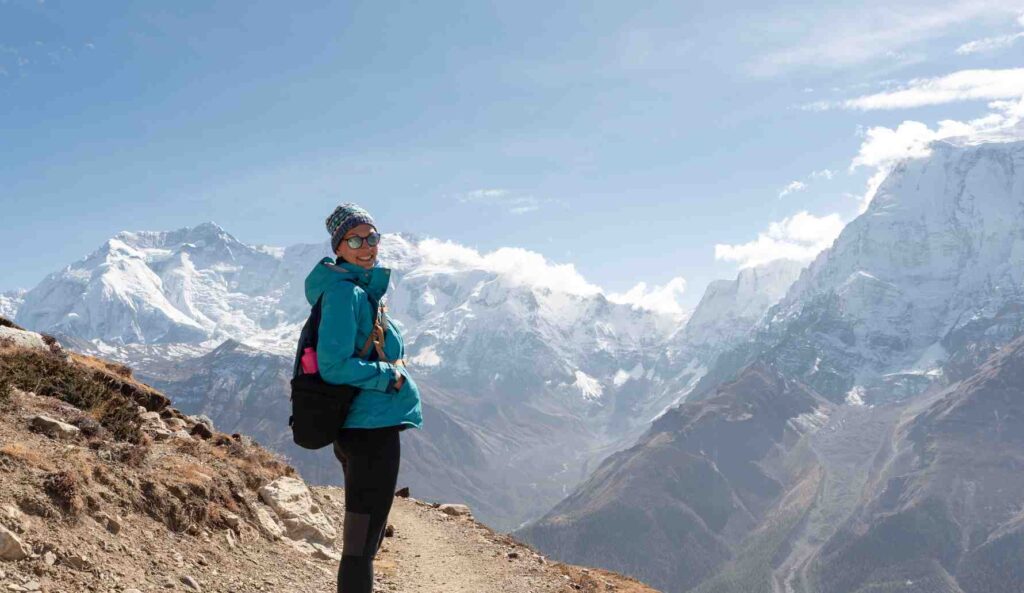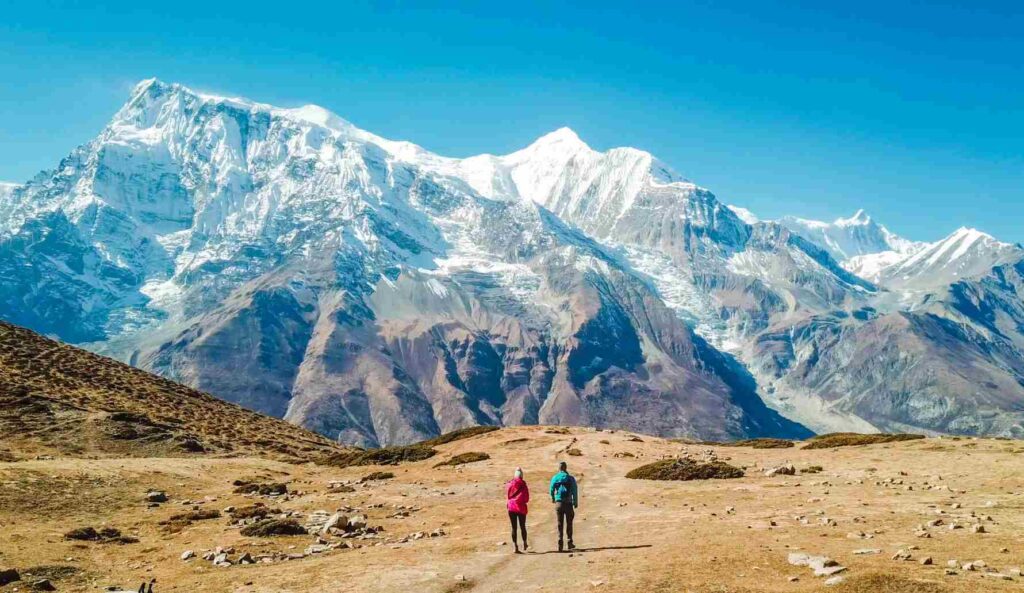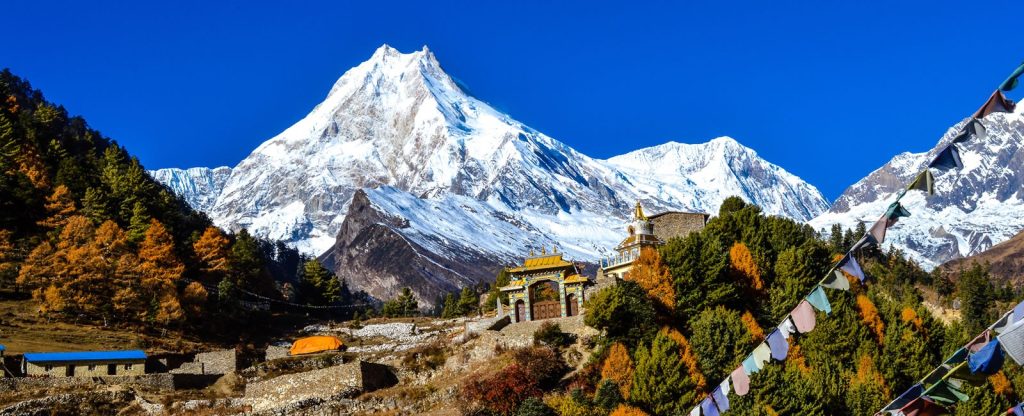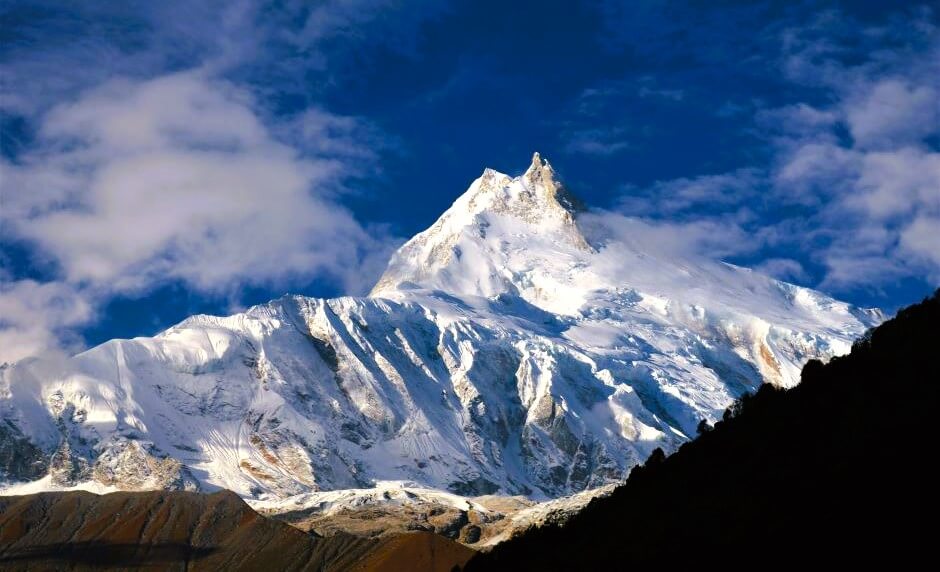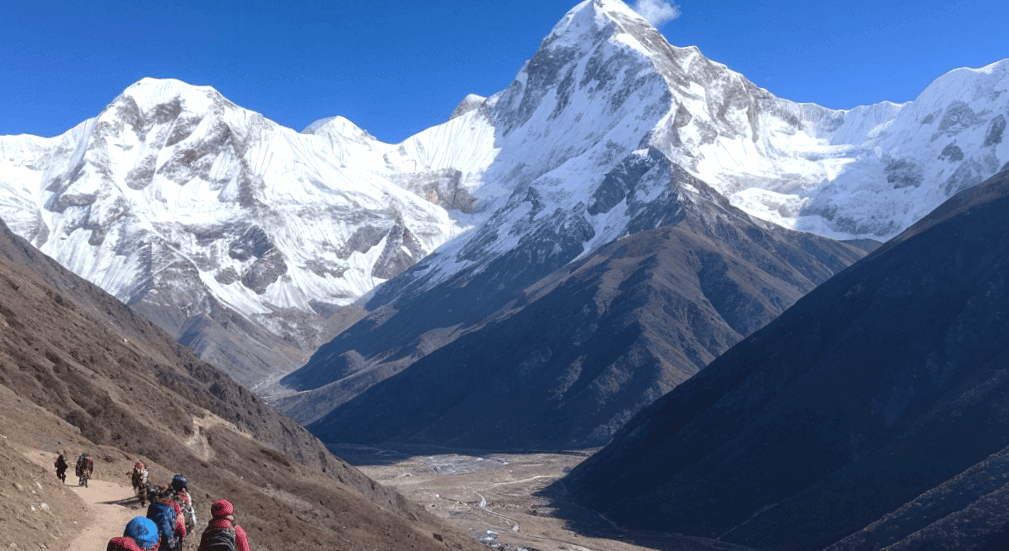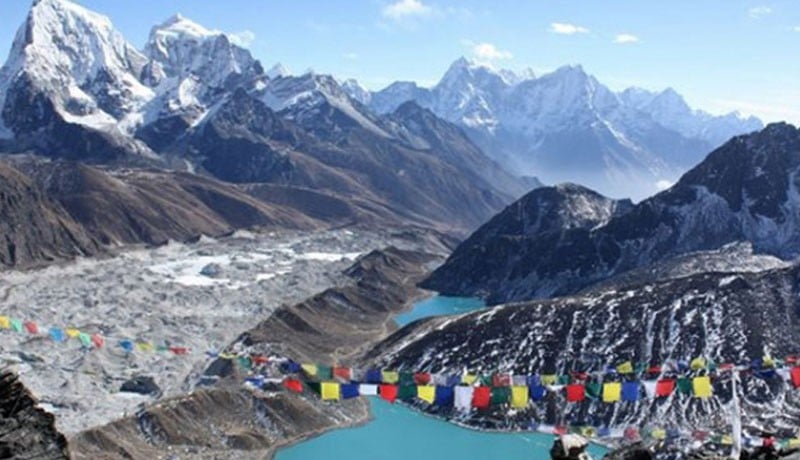-
Hotels & Guesthouse
-
Kathmandu
-
March to May & Sep to Dec
-
Private Vehicle
-
Moderate
-
5000 M
-
2-20
Tamang Heritage Trek
The Tamang Heritage Trek gives you a chance to discover the history of the Tibetan people, including their living culture, language, dress, festivals, art, tradition, and lifestyle. The Langtang Tamang Heritage Trek was developed by the Tourism for Rural Poverty Alleviation Program under the United Nations Development Project (UNDP). The Tamang Heritage Trek blends wonderful Himalayan adventures with warm Himalayan culture.
The Tamang Heritage Trek isn’t just meant to explore the rich cultural snippets of the Tamang people, but also the magic that nature offers, the history found in ancient Buddhist monasteries, the splendor of beautiful rhododendrons and bamboo forests, the majesty of ever-flowing waterfalls, the tranquility of several sacred lakes, and the glory of witnessing snow-covered peaks all around, among many other experiences.
On the Tamang Heritage Trek, you’ll enjoy a natural hot bath in the healing hot-water spring at Tatopani before reaching Nagthali, where the stay is a unique experience. The Tamang Heritage Trek offers a cultural journey where you can learn about one of Nepal’s Tibetan-influenced hill tribes, while directly contributing to their rural economy.
We begin our 10-day tour in Kathmandu Valley, and the next day we’ll head to one of the best cultural treks in the wonderful Langtang region of Nepal: the Tamang Heritage Trek.
Aarohi Holiday is always flexible enough to meet your needs and make your Tamang Heritage Trek and every other trip a wonderful experience.
Tamang Heritage Trek
- Discover the picturesque Tamang village of Gatlang.
- Experience the warmth of the Tamang people and Tibetan traditions in the villages of Thuman and Bridim.
- Offers a splendid view of the stunning Langtang Himal peak.
- Take in breathtaking views of Ganesh Himal and Langtang Himal from Nagthali viewpoint.
- Relax in the natural hot spring at Tatopani.
Tamang Heritage Trek
Upon your arrival at Tribhuvan International Airport, we offer you pick up facility from the airport and manage your stay at the most comfortable hotel in the city. You get to meet the team of trekkers and together we prepare for the trek.
Today would be the most exhilarating day where you will be introduced to the most pious Hindu and Buddhist religious places that are listed in the UNESCO World Heritage sites and elucidates you to the entire mysticism over its existence Pashupatinath temple, Boudhanath stupa, Patan Durbar Square, and Swayambhunath stupa.
We leave Kathmandu in the morning for Syabrubesi, a village that is also the starting point for treks into the Langtang valley. Our journey will be on a winding road through frequent switchbacks. On a clear day, we get to enjoy outstanding views of Manaslu, Annapurna, and Ganesh Himal. Our trek for today ends with a descent into the small village of Syabrubesi.
We begin our trek from Syabrubesi along the Langtang Khola. We move upward and downward simultaneously through oak and rhododendron forests. After crossing a bridge over the Langtang Khola (tiny river), we ascend on a steep trail which will lead us to the Lama Hotel.
We continue ascending from Lama Hotel and enjoy the mountain landscape with abundant waterfalls. As we reach the green meadows of Ghoda Tabela, we begin to see the white peaks of the Langtang range. Our trail continues to climb up the widening valley, passing a few temporary settlements used by herders. We pass by a Buddhist monastery before reaching the Langtang village, which was affected by the April 2015 earthquake.
We will start our journey to Kyangjin Gompa, a principal monastery of the region. We go through water mills, prayer wheels, Chortens, with sacred mounds of rocks with inscriptions carved on them. We also pass by the largest mani wall in Nepal, made from stone with prayers written on them. After the short trek, we explore the Buddhist shrine in Kyangjin Gompa and surrounding areas with the amazing views of the mountains.
We spend the whole day exploring Tserko Ri which will also help us acclimatize to the high altitude. We begin early in the morning. The trek passes through yak pastures before ascending to Tserko Ri. The sunrise view from the top of Tserko Ri is extraordinary. We get to explore the beautiful monastery while enjoying views of the Himalayas, glaciers, birds, and yaks.
Today after breakfast, we will learn about the people of Langtang and their centuries-old struggle in this valley, enduring natural disasters while maintaining ancient Tibetan Buddhist practices. Their livelihood, which depends on cows, sheep, yaks, and horses, reflects the unique Bhotia culture. After that, we will start our journey down to see the influence of another ethnic group, the Tamang, in the Langtang valley. Overnight at Thulo Syapru.
On our way to Sing Gompa, we will first come across a village called Dimsa. The trail further continues less steeply, through rhododendron, hemlock, and oak forests to Sing Gompa. Along the journey, we will catch a wonderful glimpse of Langtang Himal and Langtang valley.
The trail initially passes through an area entirely dominated by rhododendron and then through a forested area. The area between Sing Gompa and Laurebina Yak is a sanctuary for the red panda, an endangered species that the Nepalese call "cat bear." We will then climb a wider route through alpine country to arrive at Gosainkunda. We will explore the Lake region.
The route towards Ghopte ascends uphill and through moraines. After passing three other small lakes, we will further ascend and cross Laurebina La (4,609m/15,121ft). The path then goes downhill to Phedi. Continue to walk up and down, crossing rocky hills with pine and rhododendron trees.
Today the trek continues with ups and downs through the forest and walking on a ridge of a hill. We can also have a good view of Tadhi valley and Helambu and cross Thadepati Pass (3,690m). The trail continues through the dense forest to Magen Goth, from where the view of Langtang range and the Gosaikunda peak is dramatic. After that, we will reach Kutumsang (2,470m). Overnight at Kutumsang Lodge.
Today's trek continues downhill to Gul Bhanjyang (2,130m) and Pati Bhanjyang (1,830m), crossing through villages inhabited by the Tamang and Sherpa people with their unique culture and old villages. After Pati Bhanjyang, the trail leads up to Chisapani (2,215m), from where there is an awesome view of the Ganesh Himal range and Langtang range. Overnight at Chisopani.
Today we will trek up to Borlang Bhanjyang (2,430m) and then descend through Tamang villages, farmland, dense forest, and Shivapuri National Park until we reach Sundarijal. From there, we will catch a private car and return to Kathmandu and drop you at your hotel. The rest of the time can be spent shopping for gifts and souvenirs from Nepal for your family and friends. There will be a farewell dinner (Nepali Food) to celebrate the successful completion of our journey. Overnight in Kathmandu.
Your wonderful adventure in Nepal comes to an end today. We wish you all the best. A representative will take you to the airport approximately 3 hours before your scheduled flight.
Our team guides, porters, and accompanying staff are locals with a broad knowledge about each and every location that we travel through.
Langtang Gosaikunda Helambu Trek Cost Includes & Excludes
Cost Includes
- Pick up and drop off from and to the International airport.
- 3-night hotel in Kathmandu (first two nights and last one night).
- Langtang National Park Permit.
- TIMS (Trekking's Informational Management System) Card.
- One porter for each two people.
- Accommodation in tea houses twin sharing (private room/ Shared bathroom).
- 3 Meals a day – breakfast, lunch, Dinner during the trek (Anything from the menu).
- All land transportation.
- Sightseeing tour car A/C with driver.
- Farewell dinner at Nepalese cultural restaurant after the trek in Kathmandu.
- All taxes and Company service charges.
Cost Excludes
- Nepal Visa fee (bring accurate USD cash and two passport size photographs).
- International airfare to and from Kathmandu.
- Lunch and Dinner in Kathmandu.
- Monument sites entrance fees while sightseeing in Kathmandu.
- Excess baggage charges.
- Extra night accommodation in Kathmandu because of early arrival, late departure, and earlier return from the mountain (due to any reason) than the scheduled itinerary.
- Travel and rescue insurance.
- Personal expenses (phone calls, internet / Wi-Fi, laundry, bar bills - tea/coffee, hot chocolate, juice, beer, battery recharge, extra porters, bottled or boiled water, shower etc.).
- Tips for guides and porters (Tipping is expected, but not compulsory).
Tamang Heritage Trek
Clothing
- Moisture-wicking T-shirts
- Thermal underwear
- Fleece jacket or pullover
- Insulated jacket (down or synthetic)
- Waterproof and windproof jacket
- Waterproof pants
- Trekking pants
- Insulated climbing pants
- Warm hat and sun hat
- Gloves: Lightweight and insulated
Footwear
- Trekking boots
- Climbing boots
- Thermal socks
Sleeping Gear
- Sleeping bag rated for -20°C (-4°F)
- Sleeping bag liner
Climbing Equipment
- Climbing harness
- Crampons
- Ice axe
- Helmet
Other Essentials
- Backpack (50-70 liters)
- Headlamp with extra batteries
- Sunglasses (UV protection)
- Water bottles (2 liters capacity) or hydration system
- Water purification tablets
Mandatory Travel Essentials:
- Nepal Visa: To enter Nepal, you’ll need a visa, which you can get on arrival or from a Nepalese embassy. Make sure to choose the right visa type and duration for your adventure, especially if you plan to trek to Langtang Gosaikunda.
- Travel Insurance: It’s essential to have travel insurance that covers medical emergencies, evacuation, and trip cancellations. Given the remote terrain and high altitude of the Langtang, having insurance will give you peace of mind.
- Nepal Trekking Permit: For Langtang trek, you’ll need a trekking permit. This is crucial for accessing the trail and helps in preserving the natural beauty and culture of the region.
- Personal first aid kit
- Sunscreen and lip balm with SPF
- Passport with visa, permits, and cash
The Tamang Heritage trek is located in the lower regions of Langtang National Park in the Rasuwa district, which is situated in the central northern part of Nepal, approximately 122 km from Kathmandu. The trek begins and ends in Syabrubesi, a settlement that serves as a starting point for many trekking routes in the Langtang Valley.
The highest elevation during the Tamang Heritage trek is 3,170 meters at Nagthali, which is reached on the third day of the trek, from Tatopani to Thuman. Nagthali is a popular viewpoint offering stunning panoramic views of the Ganesh and Langtang Himalayan ranges.
Yes, clean drinking water is available at the tea houses and local settlements along the trekking trail. Trekkers are advised to carry a water bottle or flask to refill at these locations. However, it is recommended not to drink directly from taps or water sources; water should be filtered before consumption to ensure safety.
The best times to trek the Tamang Heritage Trail are during the autumn season (September to November) and the spring season (March to May). These seasons offer predictable, pleasant weather and provide stunning views of the surrounding Himalayas, making them ideal for trekking.
The Tamang Heritage trek covers a total distance of around 55-60 kilometers, spread over five days of trekking. On average, trekkers walk around 12 kilometers per day for about 5-6 hours. The trek is relatively comfortable and takes place in the midlands, allowing trekkers to go at their own pace, which helps reduce fatigue and enhances the experience of the majestic vistas along the route.
We recommend that trekkers carry any essential prescribed medications they may need, including some medication for altitude sickness, such as Diamox or Acetazolamide. However, it is not mandatory as the guides provided by Mountain Ram Adventures will carry a first aid box with the necessary medicines to address any emergencies related to altitude sickness during the trek.
Essential Info
Physical Fitness
Many people have questions as to what level of physical fitness is required for visiting Nepal, and that is extremely reliant on what activity the visitor is engaging in. With that said, for a standard trek of moderate grading (Everest Base Camp Trek is an example of moderate) the daily activity will be 7-8 hours, and elevation will generally not exceed 5,500 meters. The day’s trekking is sustained and will involve both long steep climbs, and descents with a variety of terrain underfoot from well-trodden paths, to rocks covered with ice or snow. A typical day would include a number of climbs or descents of 500 meters or more, starting after breakfast, resting at lunch, then continuous trekking until arriving at the teahouse.
In preparation for the trek, it is important to begin a training requirement at least 4 months before departing for Nepal. Three to four hours of aerobic exercise like running, walking, swimming, cycling & some gym work per week is the minimum and most will find it beneficial to add some basic strength training to their physical fitness routine. One of the best ways to prepare is to take practice hikes with a daypack roughly the same weight as what you will be taking on the trek. Do this only after a baseline of fitness has been reached. Moving fast is not the end goal, rather endurance is the focus, and will provide a more enjoyable and safe adventure.
Trekking Seasons in Nepal
There are two main seasons in which Nepal sees the most amount of visitors. Fall (September through November) being the most popular, and spring (March to May) coming in close behind. The summer months of June, July and August are the monsoon season and as such the trails are mostly washed out, and roads can sometimes be impassible due to landslide activates. Not to mention the view is non-existent. Still, there are a few places that lie in rain shadow areas and see significantly less rain if any at all, and summer can be a good time to visit these places.
Winter in Nepal is dry, with very cold nights where temperatures can drop to -20°C at the highest altitudes, but the days are pleasant and sunny. Additionally, the trails are much less crowded during this time of year. In Kathmandu, maximum daytime temperatures reach around 20°C.
Fall is the most popular because it’s after the monsoons, and the air is dry, the days are sunny, and everything is green in the lower valleys from the excessive rains. Spring is a popular choice because some rain returns, but the weather is generally warm and dry, and flowers are in bloom in the lower elevations.
Trekking Day
A typical trekking day begins with a cup of tea at around 6 in the morning. It is advised to pack your trekking gears in a duffle bag and essential supplies in your day pack in these early hours. After having breakfast, we begin the trek and head along the trail at around 8 am. The morning walk is designed to be longer as we begin with refreshed bodies and enthusiasm. Following a good morning’s walk, we make stop for lunch at around 11.30 am. The lunch involves group meals enjoying the vicinity around the stop. You can explore the surrounding or use the time according to your own consent. After resting for about an hour or two, we resume our trek to reach teahouse or camp by 3-4 pm. The afternoon walk is relatively shorter and can involve games and side trips as organized by the trekking guides. You also can enjoy breaks during the trek to relax, read or stroll around the area. You can converse with the local people and observe their lifestyle. Dinner is served around 7 in the evening to round off the day.
Meals and Accommodations
During the length of the trek, the accommodation style is commonly referred to as teahouse. These are family-run basic lodges that fill the role of the restaurant, meeting place, and boarding house for tourists. Electricity can be found in the rooms, which means one light bulb, and one or two outlets for charging electronics. The common areas are also lit by electricity. Teahouses may use solar, hydroelectric, or have electrical lines running into the village, so the commonality and availability of electricity may vary.
Most teahouses have private rooms, though if the trek is in a more remote or high altitude place dormitories are the norm. Each room has 1 or 2 single beds with basic bedding, and the bathroom is shared. Expect a mix of western and squat style toilets in the bathrooms.
Breakfast and dinner are taken at the teahouse and these lodges have large family style dining rooms centered on a stove to provide heat. The menu will have Nepali style western foods such as pasta, pizza, pancakes, burgers, and fries. Also on the menu is the traditional Dal Bhat meal. This is a lentil soup with rice and vegetable or meat curry. Most menus will also offer a smattering of local cuisine.
Internal Flight Delays
Nepal is an incredible country of mountains and valleys, rivers and green rolling hills. With this incredible diversity of landscapes, road travel can be extremely time consuming and flights within Nepal to reach popular trekking destinations is a must. Along with this mountainous terrain also comes the possibility of in climate weather. Not to mention the incredibly high number of visitors during peak seasons makes internal flight delays a very real possibility. To manage this possibility, it may be helpful to have a few extras days on either end of your tour. If any cancellations or flight delays do occur (high chances of flight delays from around Kathmandu to Lukla, Everest region), we also provide services to arrange helicopter to help you to be on your schedule on the premises of Civil Aviation Rules in Nepal which state that helicopters can fly if the visibility is 1500m. The cost ranges from USD350 to USD650 according to the number of passengers. The payment can be made either to the helicopter company or to us directly and can be made either by cash or using a credit card. It will also be helpful to purchase and review your insurance as some of the alternative measures for travel may be covered. Flight insurance too may cover changing your international flight if necessary.
Travel Insurance
Many expeditions and tours require that travel insurance is purchased prior to arriving in Nepal, but other treks and tours may not. However, travel insurance is definitely an important consideration. There are a number of reasons to consider insurance. Firstly, it may be required, so check to see what is being asked for by the company. Second, Nepal is a landlocked country, and there are few direct flights. Travel in and out can encounter some disruptions and if purchasing insurance, make sure flight delays and cancellations are included. The next reason to choose insurance is that, though every safeguard is in place during your tour, there are always extenuating circumstances that may result in an accident. Read the fine print of insurance policies to ensure trekking or any other activity you are engaging in is covered, as some policies have stopped covering trekking in certain places. It is impossible to have a relaxing trip without the comfort of good insurance, so do the research and choose carefully.
Nepal Visa Entry Procedure
For entry into Nepal, there are visa requirements everyone (except Indian nationals) must complete before being allowed to pass through immigration. This is for air travel as well as overland transportation. Most visitors may obtain a visa to enter Nepal, however, there are exceptions.
Three options are available for entry
15-day single entry: US $30
30-day single entry: US $50
90-day multiple entries: US $125
Please have a passport valid for at least 6 months from the time of entry, and have cash ready, preferably in US dollars, though there are other currencies Nepal Immigration accepts. If you are entering via overland, you must have US cash and 3 passport photos. For arrival by air, the kiosks at the airport take your picture for you.
For the most up to date list of exceptions for visa on arrival or to obtain the most current visa information, visit the Nepal Department of Immigration website.
Acute Mountain Sickness (AMS)
Acute Mountain Sickness is usually seen in un-acclimatized people shortly after ascent to high altitudes. The condition occurs due to the thinning of air as the altitude increases. The condition, if not taken seriously and treated immediately, can be life-threatening and its symptoms can be seen generally above 3000 meters. Some of the symptoms of AMS are nausea, vomiting, tiredness, shortness of breath and cerebral pain. The treks are designed to properly acclimatize you to the change in high altitude climate and sufficient precautionary measures too are taken to take utmost caution. We also equip our staffs with cell phones and satellite phones in occurrence of any emergency cases. We are greatly driven to keep the safety and security of our clients as our foremost concern.
Drinking Water
Water is essential for life, and clean water is imperative while on holiday. When choosing to visit less developed countries it is a concern that all travelers should consider. A few options are available when trekking or traveling in Nepal that will mitigate any chances of drinking contaminated water which could cause disruption of an otherwise fun adventure. The first consideration to take into account is that tap water should not be ingested. That even means when brushing your teeth. Most will choose to buy bottled water and if doing so make sure the cap has not been opened previously. Plastic bottle refuse is a problem, and with that being said there are other options on the market to assist in making water drinkable. Your local outdoor store can help with choosing what option might be best to use in conjunction with a reusable bottle. Your guide can also steer you to water that has been filtered and purified so ask him or her what is available.
Arrival Instruction
Upon your arrival at Tribhuvan International Airport, our company representatives are stationed to welcome you to the country. We request you to carefully look for your name being held by our representatives following the events upon landing. The representatives are responsible to escort you to your hotel in Kathmandu. You will see men offering you to carry luggage and take you to your destination as you exit the airport. We request you pay no attention to these people and follow the designated representatives and follow their instructions. You will also need to keep an eye on your luggage and belongings to avoid any complications.
Traveler Reviews
These genuine and honest reviews are provided by travelers who have previously journeyed with Aarohi Holiday and its team. The testimonials and firsthand experiences showcased here are sourced from well-known travel platforms such as TripAdvisor, Google, Facebook, and TrustPilot, etc.


